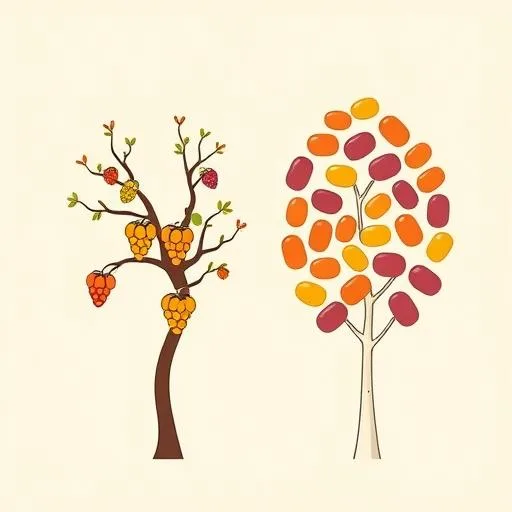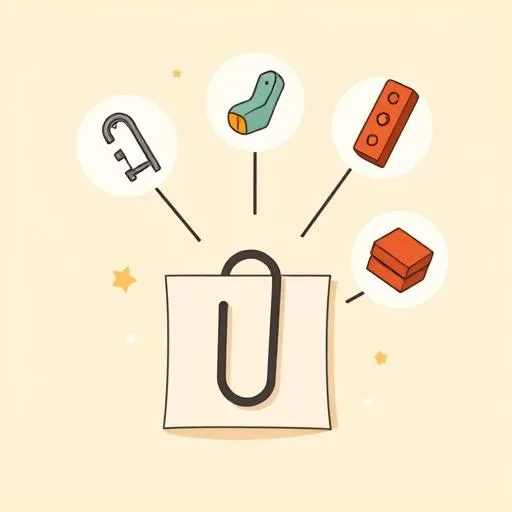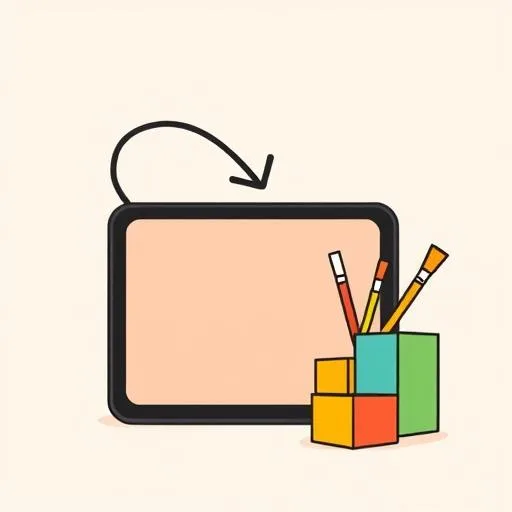
Ever watch your child proudly show you a drawing they made, all wobbly lines and wild colors, and feel your heart swell? That raw, unfiltered creativity is pure magic. Lately, I’ve been thinking about how this connects to the AI tools our kids use. With tools that can generate essays, art, and ideas in seconds, are we trading juicy, sun-ripened grapes for bland, mass-produced jelly beans—or maybe swapping a homemade meal for fast food? High school teacher Tom Moore hit a nerve recently, pointing out how AI-generated work often lacks the warmth and quirks that make human expression so captivating. How do we keep that magic alive in a tech-filled world? Let’s dive into this together—not with fear, but with curiosity and hope for our kids’ creative journeys.
The Bright Side: AI as a Creative Spark

Imagine your kid stuck on a school project—say, brainstorming ways to use a paper clip. Instead of staring blankly, they ask an AI tool for ideas. Suddenly, they’re flooded with suggestions: a makeshift hook, a bookmark, even a tiny sculpture piece! Research from the University of South Carolina shows AI can boost individual creativity by sparking new avenues for exploration. It’s like having a friendly brainstorming buddy who never runs out of weird, wonderful ideas. For our little ones, that initial push can turn “I don’t know” into “Wow, I never thought of that!”—opening doors to curiosity and playful experimentation.
The Shadow Side: When AI Muffles the Human Spark

But here’s the catch—rely too much on that digital buddy, and things can get… well, flat. Stanford professor Jane Riskin nailed it: AI-generated work often feels like “fluorescent lighting”—functional but soulless. Studies reveal that overuse can lead to repetitive ideas, emotional disengagement, and even anxiety about originality. Think about it: if a tool does the heavy lifting, do kids lose confidence in their own messy, brilliant thoughts? That unique spark—the wobble in a drawing, the unexpected twist in a story—risks getting smoothed into uniformity. It’s like swapping a hand-picked, bursting-with-flavor grape for a generic jelly bean—convenient, but missing the soul.
Keeping Creativity Alive: Tips for Us Parents

So how do we harness AI’s power without dimming that glorious creative light? First, frame tech as a launchpad, not the destination. Encourage kids to use AI for inspiration, then make it their own—add personal stories, silly details, or wild colors. Balance screen time with hands-on play: building, painting, or even just chatting about dreams. And hey, why not try a family creativity challenge? Grab some paper clips and see who dreams up the zaniest use—no tech allowed! It’s about nurturing that inner innovator, reminding them their ideas are priceless, jelly beans or not.
Looking Ahead: Cultivating Resilient, Creative Hearts

At the end of the day, it’s not about rejecting AI but integrating it wisely. Our goal? Kids who feel confident exploring, creating, and even failing—because that’s where real growth happens. Let’s champion their quirks, celebrate their “what ifs,” and keep the conversation going. After all, the future isn’t just about smarter tools; it’s about brighter, more compassionate humans. And that’s a journey worth taking—together, with hope, laughter, and maybe a few paint-smeared hands along the way.
Source: Jelly Beans for Grapes: How AI Can Erode Students’ Creativity, EdSurge, 2025/09/08 10:00:00
